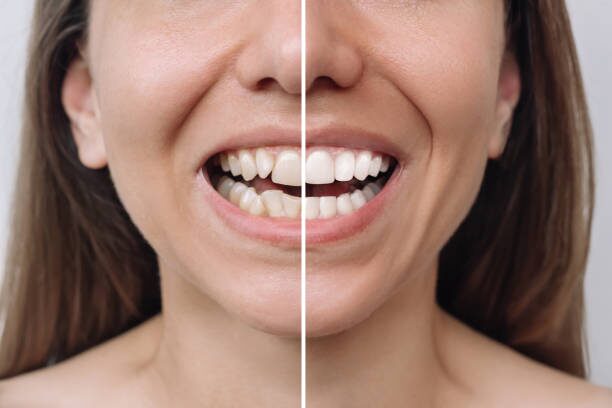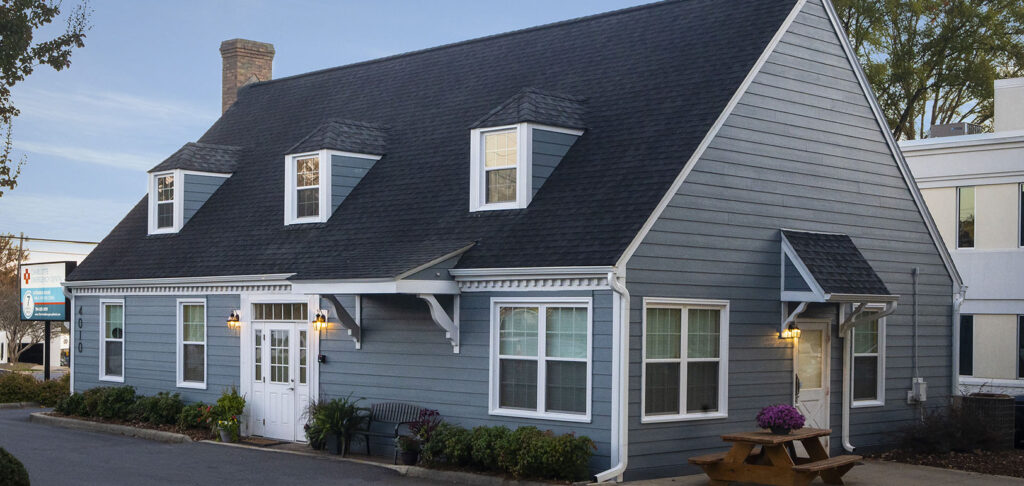
When it comes to enhancing your smile, choosing between bonding and veneers can feel overwhelming. Both options promise to deliver a stunning smile, but how do you decide which one is right for you?
In this Charlotte Emergency Dental article, we'll break down the differences, advantages, and factors to consider when choosing between bonding and veneers.
Cosmetic dentistry has become more accessible and advanced than ever, allowing patients to achieve the smile of their dreams.
But when you're considering cosmetic dental work, you might wonder: bonding and veneers—which is the better option for you? While both treatments aim to improve the appearance of teeth, they differ in application, materials, and long-term results.
So, let's dive into the key aspects of these two popular options and figure out which one suits your needs.
Both bonding and veneers serve the purpose of improving your smile, but how do they work? Simply put, bonding involves applying a resin material to the teeth, while veneers are thin shells of porcelain that are custom-made to cover the teeth.
Each has its unique method of improving the appearance of your smile.
Bonding and veneers address various dental imperfections, including gaps, discoloration, chips, and uneven teeth. They can transform a smile with minimal discomfort, offering both cosmetic appeal and functional benefits.
Understanding the differences between bonding and veneers is crucial when deciding which treatment is right for you. Factors like cost, longevity, aesthetics, and your specific dental needs will play a significant role in your decision-making process.
Let’s start by diving deeper into dental bonding, which is often considered the more affordable option for cosmetic touch-ups.
Dental bonding is the application of a tooth-colored resin to your teeth's surface. A special light then molds and hardens this resin, allowing it to bond with your enamel.
The resin used in bonding is shaped and polished to match your surrounding teeth, giving you a natural-looking smile. Unless it's for filling cavities, the treatment is minimally invasive and often requires no anesthesia.
Minor cosmetic fixes such as chipped teeth, small gaps, or slight discoloration typically recommend bonding. It’s also a popular choice for people looking to quickly and affordably improve their smile without permanent alterations.
Now, let’s explore dental veneers, which offer a more durable and permanent solution for more extensive cosmetic issues.
Veneers are ultra-thin, custom-made shells of porcelain or resin that are placed over your teeth by your dentist at Charlotte Emergency Dental. They are designed to mimic the look of natural teeth and are bonded to the tooth surface, covering any imperfections.
Veneers provide a long-lasting solution for a variety of dental problems, including severe discoloration, cracks, gaps, and uneven teeth. They are frequently used for complete smile makeovers, providing a flawless finish that can last for years.
When there are more significant aesthetic concerns, such as crooked teeth, noticeable gaps, or teeth with extensive damage or discoloration, patients generally prefer veneers. They’re ideal for patients seeking a durable and stunning solution.
Now that we’ve covered the basics, it’s time for a head-to-head comparison of bonding and veneers.
Bonding uses composite resin, while veneers are made from porcelain. Porcelain is more durable and stain-resistant, making veneers a better option for long-term wear.
Veneers tend to last longer, often 10 to 15 years or more with proper care. Bonding, on the other hand, usually lasts about 3 to 7 years before needing touch-ups or replacement.
Veneers offer a more natural and polished finish due to their translucency and stain resistance. Bonding can achieve a natural look, but over time, the resin material may dull or discolor.
Porcelain veneers are highly stain-resistant, making them ideal for individuals concerned with long-term aesthetics. Bonding, however, is more prone to staining from foods and drinks like coffee or red wine.
Bonding is a quicker treatment, often completed in a single visit. Veneers, however, require multiple appointments—one for impressions and another for the application, making it a longer process.
Your dental needs will largely determine whether bonding or veneers is the better choice.
Bonding is ideal for addressing small imperfections like tiny chips, minor discoloration, or small gaps. It offers a quick, budget-friendly fix that can be completed in just one visit.
For more severe cosmetic concerns, veneers are typically the better choice. They offer a more comprehensive solution for crooked, severely discolored, or damaged teeth, providing a long-lasting transformation.
Wondering how bonding is applied? Let’s break down the steps.
The process starts by cleaning the teeth, followed by the application of a mild etching solution. Composite resin is then molded to the desired shape and hardened using a curing light.
Bonding typically takes about 30 to 60 minutes per tooth, making it a relatively quick treatment that can be completed in one sitting.
One of the benefits of bonding is that you’ll see immediate results. There’s no downtime—meaning you can enjoy your new smile right after the treatment.
Here’s what you can expect if you opt for veneers.
The veneer process begins with taking impressions of your teeth, followed by minimal shaving of the enamel. After the veneers are crafted in a lab, they are bonded to your teeth using a dental adhesive.
Before applying veneers, your dentist may remove a small amount of enamel to ensure a perfect fit. This step is necessary for a natural-looking, seamless result.
There’s typically no recovery time with veneers, but you may experience mild sensitivity for a few days after the treatment. Veneers can immediately enhance your smile once applied.
Let’s talk about how long your smile enhancement will last.
Bonding usually lasts 3 to 7 years, depending on your dental habits and lifestyle choices. It may require occasional touch-ups.
Veneers, when cared for properly, can last 10 to 15 years or even longer. They offer a more durable solution for long-term dental improvement.
Regular dental checkups, daily brushing, and flossing are essential for maintaining both bonding and veneers. Avoid habits like biting nails or chewing ice, as these can damage your dental work.
The longevity of both bonding and veneers can be affected by your diet, oral hygiene, and habits. Veneers tend to hold up better against everyday wear and tear due to their durability.
Still have concerns about these cosmetic options? Let’s address some of the most frequently asked questions.
Both treatments are typically painless. Local anesthesia may be used for veneers, but bonding usually doesn’t require it unless it’s being used for filling cavities.
While bonding is easily reversible, veneers are considered a permanent solution due to the enamel removal involved.
The risks for both treatments are minimal, though bonding may chip or break more easily than veneers. Veneers require enamel removal, which can increase tooth sensitivity.
Let’s break down the costs associated with each treatment.
Dental bonding typically costs between $100 and $400 per tooth, making it an affordable cosmetic solution.
Veneers can cost between $800 and $2,500 per tooth, depending on the material used and the complexity of the treatment.
Many dental offices, like Charlotte Emergency Dental, offer financing options such as Care Credit to make cosmetic treatment more affordable.
At Charlotte Emergency Dental, we understand that dental emergencies and cosmetic concerns can arise at any time. Whether you're looking for immediate care or long-term cosmetic solutions like bonding or veneers, our experienced team is here to help.
We offer personalized treatment plans to restore your smile quickly and efficiently. With flexible financing options, achieving a stunning smile has never been more accessible.
Ready to transform your smile? Contact Charlotte Emergency Dental today to schedule your consultation and get the care you deserve!

Whether you choose bonding or veneers, both cosmetic dental options offer a way to enhance your smile. Bonding is a budget-friendly, quick fix, while veneers provide a durable, more natural-looking solution.
If you're still unsure which option is best for you, consult with your dentist at Charlotte Emergency Dental to explore the best solution for your smile.

We have temporarily updated our hours, reflected below.
MONDAY to FRIDAY
9:00am – 7:00pm
SATURDAY to SUNDAY
9:00am – 3:00pm
Save time, print online! Fill out forms online before your first visit to shorten your appointment time with us.